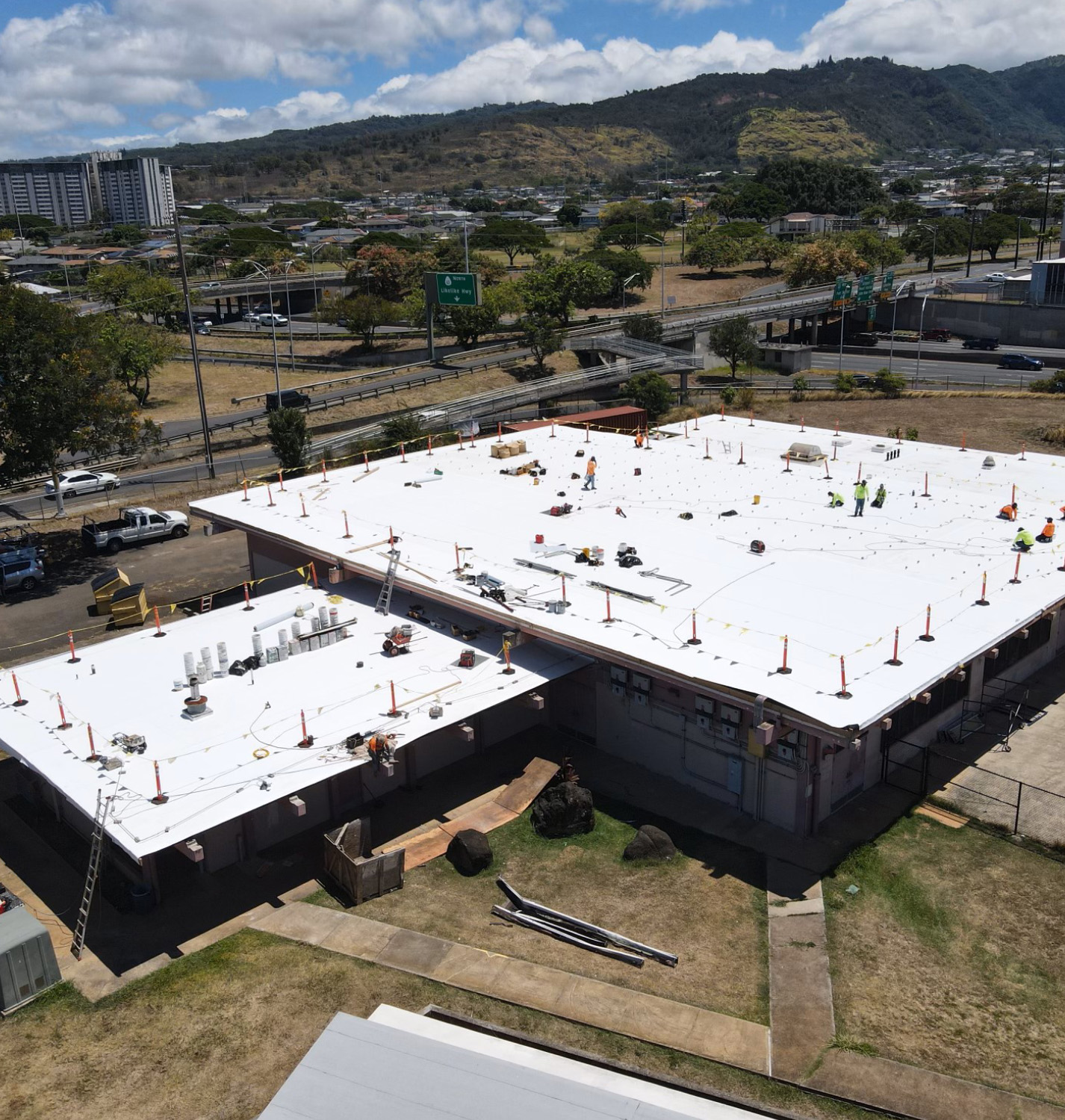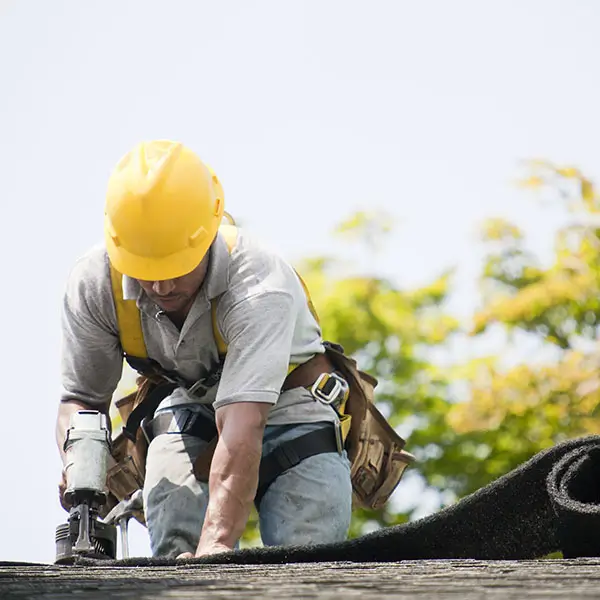Discover Typical Roof Troubles and Exactly How to Address Them Efficiently
When it comes to your roof, identifying troubles early can save you time and money. What certain steps should you take to ensure your roofing continues to be in top problem?
Identifying Roofing System Leakages and Their Reasons

Following, analyze your roofing system from the outside. Look for missing or split floor tiles, rusted flashing, or harmed rain gutters.
During heavy rainfall, observe your roof for any type of pooling water or drips. This can disclose leaks that may not be noticeable throughout dry problems. By remaining watchful and regularly checking your roofing system, you can capture leakages early and protect your home from more damages.
Handling Missing or Harmed Roof Shingles
When you notice missing or damaged roof shingles, it's essential to act rapidly to stop additional concerns. You'll desire to recognize the extent of the damage, fix any kind of missing shingles, and consider precautionary upkeep tips to keep your roofing system in top form. Taking these actions can conserve you money and time down the road.
Determining Tile Damages
Although roof shingles are developed to withstand the components, they can still experience damage over time, leading to prospective leaks and expensive repair services. To determine shingle damages, beginning by inspecting your roof covering for missing, cracked, or curled tiles. Consistently monitoring your roof covering, particularly after severe weather, can help you catch concerns early and preserve the honesty of your home.
Repairing Missing Roof Shingles
After spotting roof shingles damages, the following action is dealing with any kind of missing or harmed roof shingles without delay to avoid further problems. Begin by checking the damaged area and identifying exactly how lots of tiles require replacement. If you can, climb onto your roofing system safely, using suitable gear. Eliminate any type of damaged roof shingles thoroughly using a pry bar. Once you've cleared the location, slide in the new roof shingles, ensuring they align with the existing ones. Secure them with roofing nails and use roofing adhesive for included security. Don't neglect to secure the sides to avoid water infiltration. If you're unpleasant with the repair, it's important to call a specialist. Taking activity rapidly will help preserve your roofing's stability and extend its life-span.
Preventive Maintenance Tips
Just how can you maintain your roof covering in top form and stop shingles from going missing or getting damaged? Normal inspections are crucial. Examine your roofing system a minimum of twice a year and after serious climate. Try to find signs of wear, such as curling, splitting, or loose shingles.
Keep rain gutters tidy and devoid of particles to assure appropriate water flow and avoid tile damages. Trim looming branches to reduce the danger of them scratching versus your roof throughout tornados.
Consider applying a protective sealer to expand your shingles' life expectancy. If you observe any type of issues, address them promptly to prevent expensive repair services later on. Taking these safety nets can conserve you money and time while guaranteeing your roof remains long lasting and reputable.
Recognizing Roof Covering Air Flow Issues
Appropriate roof covering air flow is crucial for keeping the long life and effectiveness of your roofing system, as it helps regulate temperature level and dampness degrees in your attic room. Without sufficient ventilation, you might face concerns like excessive heat build-up, bring about early roof shingles degeneration, or boosted humidity that can cause mold and mildew development and wood rot.
To evaluate your roof air flow, look for indications of getting too hot, such as distorted shingles or a warm attic. Look for blocked vents, which can limit air flow and trap warmth. You ought to guarantee your consumption and exhaust vents are balanced, enabling correct air exchange.
Resolving these problems quickly can secure your roof covering and save you from expensive repairs down the line. Keep aggressive in keeping your roof's air flow to safeguard your home.
Addressing Roofing Moss and Algae Development
While you may value the all-natural look of moss and algae on your roof, these microorganisms can lead to substantial troubles if left untreated. Utilize a soft-bristle brush to gently scrub away the moss and algae, being careful not to damage your tiles.
Following, take into consideration using a specialized roof covering cleaner or a combination of water and bleach to kill remaining spores. Wash completely to stop any kind of chemical damage. In addition, mount zinc or copper strips along the ridge of your roofing system. As rainfall cleans over these metals, it develops a safety obstacle versus future growth. Routine examinations and upkeep will certainly help avoid moss and algae from returning, guaranteeing your roofing system remains in great form for several years to come.
Repairing Storm Damages and Wind Problems
After a tornado, it's crucial to assess your roofing for damages triggered by high winds and hefty rainfall. Begin by inspecting for missing or damaged roof shingles, as these are common casualties.
Look for any kind of sagging locations, which could show water accumulation or structural issues. If you locate any type of particles, like branches or leaves, remove them meticulously to prevent more damage. If your gutters are obstructed, clear them to ensure appropriate drainage.

For tiny repair work, you may handle it on your own, yet don't wait to call an expert for extensive damage. Remember, acting promptly can conserve you from larger problems down the line, so take that evaluation seriously and address any concerns as soon as feasible.
Identifying Indicators of Architectural Damage
How can you inform if your roof is enduring from structural damages? Next off, check for fractures or gaps in the walls or ceiling, as these can indicate changing or clearing up due to roof problems. If you notice missing out on or damaged tiles, it's essential to resolve them promptly, as they can reveal your roofing to more damage.
Routine Upkeep Tips for Longevity

Routine Assessments Value
Since a roof covering is your home's first line of protection versus the aspects, regular assessments are vital for preserving its integrity (roofing honolulu hi). You ought to inspect your roofing at the very least twice a year, preferably in spring and fall, to catch possible problems early. Search for missing out on or harmed shingles, signs of leakages, and any type of particles that might cause troubles. Pay very close attention to areas around smokeshafts, vents, and blinking, as these are common vulnerable points. If you observe anything uncommon, do not hesitate to get in touch with a specialist for a detailed evaluation. Staying up to date with these examinations can stop pricey fixings down the line and extend your roof covering's life expectancy, guaranteeing your home remains protected for several years to find.
Proper Rain Gutter Upkeep
Routine roofing inspections normally lead to the significance of proper rain gutter maintenance. Evaluate your rain gutters for leakages or rust; they can cause water damages to your roofing and home. By following these pointers, you'll extend your seamless gutters' life expectancy and safeguard your roof.
Often Asked Questions
Exactly How Can I Choose the Right Roof Covering Material for My Home?
To pick the best roof covering material for your home, consider climate, sturdiness, and visual appeals. Study options like asphalt roof shingles, steel, or floor tile. Think of upkeep requirements and spending plan to locate what suits you finest.
What Are the Signs I Need a Roof Replacement Rather of Repair?
If you observe prevalent leaks, drooping, or missing out on shingles, you may require a roof substitute. If your roof's nearing its life expectancy or has substantial damages, it's time to contemplate a full replacement instead of just fixings.
Exactly how Usually Should I Schedule Professional Roofing System Evaluations?
You need to set up specialist roof inspections a minimum of yearly, preferably in springtime or loss. This aids capture possible problems early, ensuring your roofing system stays in great condition and extending its life-span.
Can I Mount a New Roof Covering Over My Old One?
You can mount a brand-new roofing over your old one, but it's vital to examine neighborhood structure codes and ensure the existing roofing system's problem is audio. This technique can save money and time, but take into consideration potential complications.
What Is the Ordinary Life-span of Different Roofing Materials?
The standard life expectancy differs by material: asphalt shingles last 15-30 years, steel roofings can last 40-70 years, while floor tile or slate roofing systems might surpass 50 years. Select sensibly based on your environment and budget plan.
Final thought
By staying cautious and resolving typical roofing troubles immediately, you can safeguard your home and prolong your roofing system's lifespan. Routinely evaluate for leaks, harmed tiles, and air flow issues, and take on moss or algae growth prior to it intensifies - roofing honolulu hi. After storms, look for any damages and make necessary repairs. With a little roofers oahu routine maintenance, you'll not just protect your financial investment but additionally take pleasure in satisfaction knowing your roofing remains in top shape. Do not wait-- act currently!